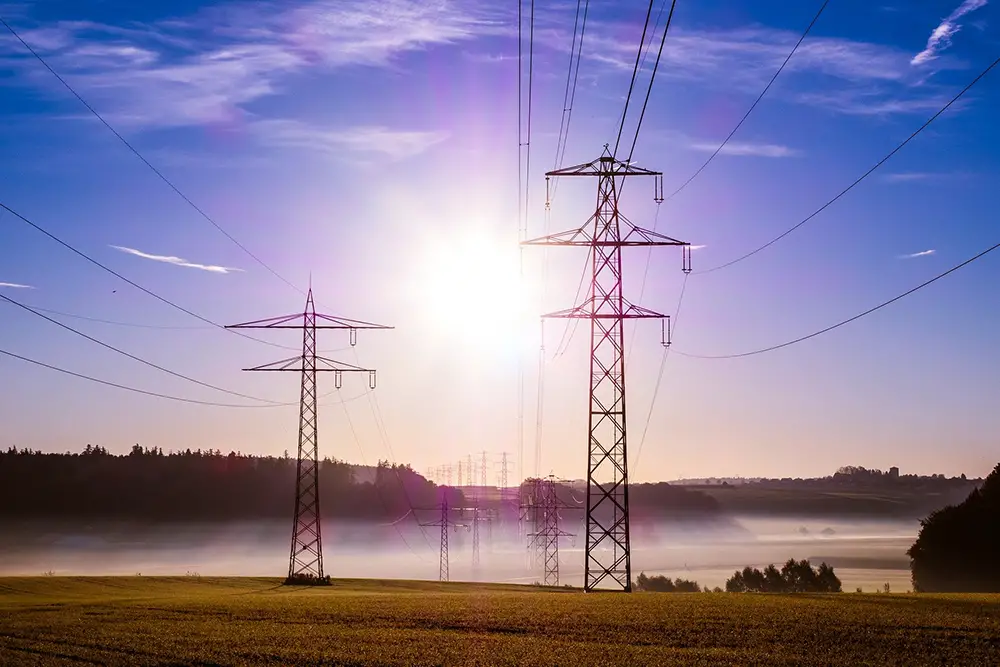Affiliate Disclosure: As an Amazon Associate I earn from qualifying purchases.
Many people will choose to leave their devices powered on all the time for convenience, but how much electricity does a computer use if left on, and how much will this end up costing you?
An average desktop computer will use between 65 and 250 watts, whereas a laptop will use between 15 and 60 watts. The components and what it is used for are the biggest determining factors. The cost to keep a computer left on 24/7 can range between $50 and $250 over the course of an entire year.
In this article, we’ll look at how much electricity a typical computer uses, whether you should leave it powered on all the time, and how much you can expect to pay to keep it running 24/7.
How Much Electricity Does a Computer Use?
Unfortunately, there is no single answer to how much electricity a computer uses.
Typically, your average desktop computer will use between 65 and 250 watts.
If you have a laptop, you can expect it to use considerably less power than a desktop at around 15 to 60 watts.
This is quite a large range due to a couple of influencing factors. We will discuss what these are further into the article.
Even if your computer is left powered on, providing it goes into a sleep or standby mode when not in use, it will use very little electricity, especially compared to the electricity usage around the rest of your home.
You can save a lot more electricity by addressing your heating, cooling, and lighting instead of obsessing over whether leaving your computer powered on overnight is using a lot of electricity and costing you a lot of money.
Even if you use your computer a considerable amount, its overall energy usage is often not a significant amount of your total use across your home.
Even though, in the grand scheme of things, your computer doesn’t use a massive amount of power, it is silly to let it go to waste.
Therefore, my recommendation is to set your computer to go to sleep automatically when you are not using it. Setting it to sleep after around 15 minutes of inactivity will keep it powered on and ready to go should you need it, but is an easy way of being able to save both electricity and money.
You may also like: Do Powerline Adapters Use a Lot of Electricity?

What Factors Influence How Much Power a Computer Uses?
The main factors that influence how much power your computer uses are the components found inside the computer, and what you actually use it for.
Components
A high-end gaming PC that uses top-of-the-line components will undoubtedly use more electricity when in use compared to a basic laptop with a low-power CPU and integrated graphics.
How You Use Your Computer
Even though you may have a large and powerful 750W power supply in your computer doesn’t mean that all 750W of power will be used all the time.
Your computer is likely to come with some built-in power-saving features to lower energy usage when it is sitting idle or performing basic tasks like web browsing that don’t require much power.
If you are mining for Bitcoin, for example, you will definitely be using more electricity compared to someone who is simply browsing the web or typing up a document, even if the same computer is used for the same number of hours per day.

Should You Keep a Computer Powered on All the Time?
Leaving a computer powered on all of the time is generally considered safe, especially with the quality control checks that are in place for components these days.
Many people believe that it is better to avoid turning your computer off when it isn’t being used as the frequent startups and shutdowns will have an impact on the components and reduce their lifespan.
Looking at this, on the other hand, you could imagine that leaving your computer powered on all of the time is going to have a greater effect on the wear and tear of the components.
So, should you leave your computer on all the time?
It really comes down to how often you make use of it.
If you use it multiple times per day, every day of the week, it is probably best to leave it powered on.
If you only use your computer for a short time – maybe an hour or two – once per day, it makes sense to power it down when you are finished using it.
Leaving a computer powered on all the time is going to be less stressful on the components than turning it off and on several times a day, but there is still constant stress.
Each and every time your computer powers up, there is a small surge of power as all of the components kick into action. This surge, albeit small, occurring multiple times a day can shorten your computer’s lifespan.
Many will argue that the concept of startups and shutdowns causing unnecessary stress is outdated given the components used in computers these days. For this reason, here are a few other reasons you may wish to keep your computer left on or to turn it off.
Reasons to Keep Your Computer Powered On
- You don’t want to have to wait for it to start up
- You want to be able to access it remotely
- You want background tasks to run, such as updates or backups, when not in use
Reasons to Turn Your Computer Off
- The sound it produces can be disturbing
- An occasional reboot is good for ongoing performance
- It can have an effect on your electricity usage and slightly increase your bill
Personally, I will keep my computer powered on all the time, but make sure it goes into a low power state by putting it to sleep when not in use.
This keeps it ready to use without producing wear and tear and has very little effect on overall electricity usage and cost.
Related article: Do I Need a Wi-Fi Card for My Gaming PC?
How Much Does It Cost to Leave a Computer On?
To calculate how much it would cost if you were to leave your computer on, use this formula:
wattage x hours used ÷ 1000 x price per kWh = cost of electricity
Let’s look at a few examples.
Example 1
Let’s say you have a high-end gaming PC that uses 200 watts of power.
200 watts multiplied by 24 hours divided by 1000 multiplied by 365 days in the year equals 1752 kilowatt-hours (kWh).
In the US, the average cost of electricity per kWh is around 13.31 cents, so 1752 multiplied by 13.31 comes to a cost of around $233 dollars to keep your computer powered on 24/7 for an entire year.
| Country | Power Consumption | Hours of Use Per Day | 1 kWh Cost | Cost Per Day | Cost Per Year |
| United States | 200W | 24 | 13.31 cents | $0.64 | $233 |
| United Kingdom | 200W | 24 | 14.37 pence | £0.69 | £252 |
| Canada | 200W | 24 | 11.85 cents | $0.57 | $208 |
| Germany | 200W | 24 | 30.85 euro cents | €1.48 | €540 |
Example 2
Perhaps you have a laptop that uses considerably less electricity at 50 watts.
50 watts multiplied by 24 hours divided by 10000 multiplied by 365 days equals 438 kWh.
438 kWh multiplied by 13.31 cents equates to just over $58 to keep the laptop powered on, again 24/7 for an entire year.
The cost of electricity does vary depending on where you live, so I have done some math and worked out how much it would cost to run the two examples above in a few different countries around the world.
| Country | Power Consumption | Hours of Use Per Day | 1 kWh Cost | Cost Per Day | Cost Per Year |
| United States | 50W | 24 | 13.31 cents | $0.16 | $58 |
| United Kingdom | 50W | 24 | 14.37 pence | £0.17 | £63 |
| Canada | 50W | 24 | 11.85 cents | $0.14 | $52 |
| Germany | 50W | 24 | 30.85 euro cents | €0.37 | €135 |
Conclusion
How much electricity a computer uses and how much you can expect to pay for it will vary depending on:
- Components used within the computer
- What the computer is being used
- Cost of electricity
This obviously does vary greatly, but for someone in the US running a high-end gaming PC 24/7 can expect to pay around $233 per year, whereas a laptop with lower power requirements will cost around $58.
There are reasons for and against leaving a computer powered on all the time, but I personally opt to keep mine powered on and readily available.
In the grand scheme of things, it doesn’t cost the earth to leave powered on and there will be less wear and tear over time compared to having to frequently start it up and shut it down.
